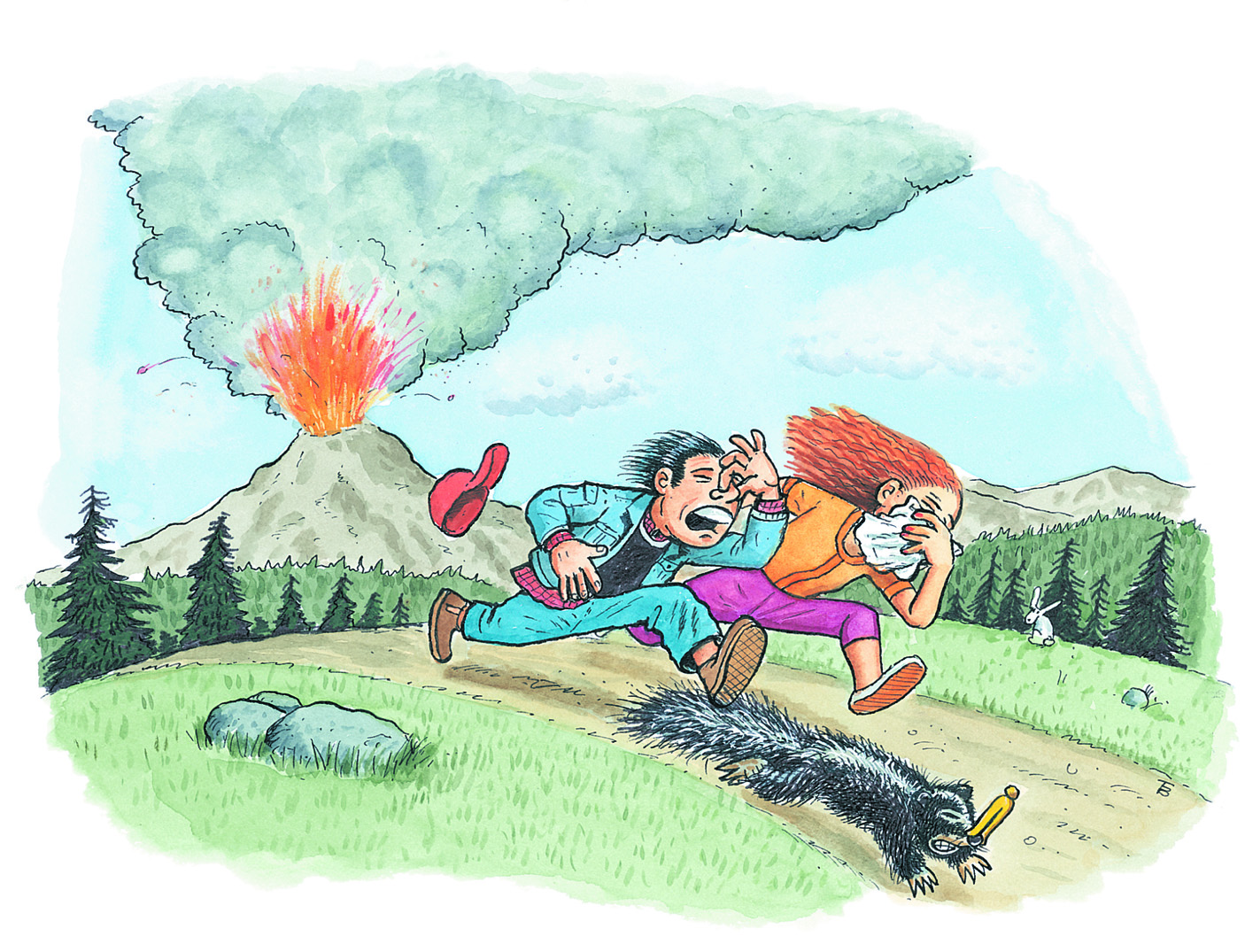
Overview
In this section you will find materials that support the implementation of EarthComm, Section 9: Volcanoes and the Atmosphere.
Learning Outcomes
- Analyze data on volcanic eruptions on maps and graphs to identify patterns in the range in scale of volcanic eruptions.
- Plan and carry out an investigation that measures the amount of dissolved gas in a carbonated beverage.
- Develop a model that illustrates how gases dissolved in magma are released during volcanic eruptions.
- Obtain information about the ways volcanic eruptions can affect humans and global temperatures.
Inquiring Further
1. To learn more about how scientists create models that examine volcanic ash, visit the following web site:
Volcanic Ash Modeling, National Weather Service NOAA
Examines the dangers of volcanic ash and how scientists monitor the dispersion of volcanic ash.
2. To learn more about monitoring efforts of the Cascades Volcano Observatory, visit the following web sites:
Cascades Volcano Observatory, CVO USGS
Examine how the Cascades Volcano Observatory intensively monitors restless volcanoes and assesses the hazards threat.
Western U.S. Volcanoes Monitored by the Cascades Volcano Observatory, CVO USGS
Description and images of how changes in the surface of volcanoes are monitored by the Cascades Volcano Observatory.
Resources
To learn more about this topic, visit the following web sites:
Particle Types
Ash - the Greater Hazard, USGS
Ash is the most frequent and widespread volcanic hazard. Find out more about how it affects lives.
Ash and Tephra and Pumice and Scoria, etc., USGS
Find definitions and images of terms from the Volcano Hazards Program Glossary.
Distribution and Hazards of Volcanic Ash
Volcanic Air Pollution - A Hazard in Hawaii, USGS
Hawaii serves as a good case study for demonstrating how volcanic particles can spread over a wide range.
Airborne Volcanic Ash - Threat to Aviation, USGS
If the world’s air traffic corridors passes over or downwind of hundreds of volcanoes what is the threat?
Volcanic Ash - Danger to Aircraft in the Northern Pacific, USGS
In 1989-1990, a series of eruptions of the Redoubt Volcano in Alaska threatened airplane traffic throughout northern North America. This site includes several examples of the dangers volcanic eruptions can have on airplanes, even if the airplane is hundreds or even thousands of miles from the volcano.
Volcanic Explosivity Index
The Volcanic Explosivity Index, University of North Carolina
Learn more about the classification system volcanologists use to describe and compare volcanic eruptions.
Volcanic Gases
Volcanic Gases and Earth's Young Atmosphere, Volcano World
Learn about two theories for the origin of Earth's atmosphere.
Volcanic Gases, Volcano World
Includes different facts about volcanic gases, including data about gas compositions from different plate margins.
Effects of Volcanic Gases, Volcano Information Center UCSB
Lists the effects of different volcanic gases on the environment, including animals.
Volcano Hazards Fact Sheets, USGS
Index of fact sheets from the Volcano Hazard Program.
Volcanoes and Climate Change
Volcanoes and Climate Change, NASA
This article from NASA's Distributed Active Archive Center details the effects that large scale eruptions, such as the eruption of Mount Pinatubo, can have on the long-term global climate.
Volcanoes and Earth's Climate, USGS
Learn how volcanic gases like sulfur dioxide can cause global cooling, while volcanic carbon dioxide has the potential to cause global warming.
